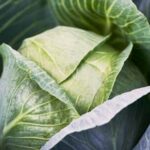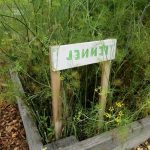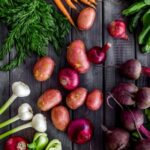Vegetable gardening in Western Kansas presents its own unique set of challenges and opportunities. As one of the driest regions in the United States, with hot summers and cold winters, growing vegetables here requires careful planning and special techniques. In this article, we will explore the various factors that make vegetable gardening in Western Kansas different from other regions, including the climate, soil conditions, and limited water resources.
To successfully grow vegetables in Western Kansas, it is essential to understand the climate and soil conditions that are prevalent in the region. With its arid climate and sporadic rainfall, water conservation becomes a critical consideration for gardeners.
Additionally, the high temperatures during summer and freezing temperatures during winter pose their own challenges to plant growth. However, despite these obstacles, there are also opportunities to take advantage of these unique conditions through the careful selection of plants that can thrive in such environments.
Choosing the right vegetables for Western Kansas involves selecting drought-tolerant and heat-resistant varieties that can withstand the harsh conditions found in this region. By focusing on these types of plants, gardeners can increase their chances of success while minimizing potential losses due to inadequate water supply or extreme temperatures.
In addition to considering plant characteristics like adaptability to dry conditions and temperature tolerance, it is important to choose vegetables that are well-suited for short growing seasons. In Western Kansas where frost dates often arrive earlier than other regions, selecting early maturing varieties will help maximize yields before winter sets in.
In the following sections of this article, we will delve deeper into each aspect of vegetable gardening in Western Kansas, providing valuable insights on preparing your garden for optimal soil health and drainage in arid areas as well as discussing efficient irrigation techniques to make the most out of limited water resources.
We will also address common pest and disease challenges faced by vegetable gardeners in this region and explore ways to extend the growing season through various methods such as using cold frames or row covers.
By understanding the unique conditions of vegetable gardening in Western Kansas and implementing strategies tailored to this region, gardeners can experience a bountiful harvest and enjoy fresh produce year-round. Additionally, connecting with other vegetable gardeners in the area through community resources and events can provide valuable support, knowledge exchange, and a sense of community amongst like-minded individuals.
In the following sections of this article, we will explore these topics further to help you succeed in your vegetable gardening endeavors in Western Kansas.
Climate and Soil Conditions
The Arid Climate of Western Kansas
One of the major challenges for vegetable gardening in Western Kansas is the arid climate. With hot summers and limited rainfall, gardeners need to understand how to work with these conditions to ensure successful harvests. The average annual precipitation in this region ranges from 16 to 20 inches, which is significantly lower than other parts of the state. This means that gardeners must be mindful of water conservation and efficient irrigation techniques.
Understanding the Soil Conditions
Another factor to consider when vegetable gardening in Western Kansas is the soil conditions. The soil in this region tends to be sandy or loamy, which can present both advantages and disadvantages. Sandy soil, for example, drains quickly but may lack essential nutrients. On the other hand, loamy soil has good drainage and holds moisture well, but it also needs careful management to prevent compaction.
Opportunities for Western Kansas Vegetable Gardeners
While the climate and soil conditions in Western Kansas may pose challenges, there are also unique opportunities for vegetable gardeners in this region. The intense sunlight and long growing season provide favorable conditions for certain vegetables that thrive in hot climates. For example, tomatoes, peppers, cucumbers, and melons are heat-loving plants that can produce abundant yields when given proper care.
Furthermore, gardening enthusiasts can take advantage of microclimates within their own yards or use protective structures such as greenhouses or high tunnels. These structures help extend the growing season by providing a controlled environment that shelters crops from extreme temperatures and windy conditions.
Selecting the Right Vegetables for Western Kansas
Selecting the right vegetables for vegetable gardening in Western Kansas is crucial to ensure a successful harvest. With the unique climate and soil conditions in this region, it is important to choose varieties that are well-suited for the arid and hot environment. By selecting drought-tolerant and heat-resistant vegetables, gardeners can increase their chances of a bountiful harvest despite the challenging conditions.
Drought-Tolerant Vegetables
One of the biggest challenges for vegetable gardening in Western Kansas is dealing with periods of drought. To combat this, it is important to choose vegetables that are naturally adapted to dry conditions. Some popular options include:
- Tomatoes: Look for varieties such as ‘Celebrity’, ‘Solar Fire’, or ‘Sweet Chelsea’ which have been specifically bred for their ability to tolerate drought conditions.
- Peppers: Varieties like ‘Jalapeno M’ or ‘Hungarian Hot Wax’ are known for their ability to withstand drought without compromising on flavor.
- Beans: Consider planting dry beans such as pinto beans or black beans which are well-suited for arid climates.
- Okra: This Southern staple is not only heat-resistant but also highly drought-tolerant, making it an excellent choice for Western Kansas gardens.
- Eggplant: Look for varieties like ‘Black Beauty’ or ‘Hansel’ which are known for their ability to handle high temperatures without wilting or declining in productivity.
- Melons: Watermelons and cantaloupes are not only delicious but also well-adapted to hot weather conditions.
Heat-Resistant Vegetables
Another challenge faced by vegetable gardeners in Western Kansas is the extreme heat during summer months. Luckily, there are several heat-resistant vegetables that thrive in these conditions:
In addition to these examples, it’s important to research and select other vegetables that have proven success in Western Kansas’ unique climate and soil conditions. Additionally, seeking advice from local gardeners or agricultural extension offices can provide valuable insight into which specific varieties thrive in the area. By carefully choosing drought-tolerant and heat-resistant vegetables, gardeners in Western Kansas can increase their chances of a successful harvest despite the challenging conditions they face.
Preparing the Garden
One of the key factors to consider when vegetable gardening in Western Kansas is optimizing soil health and drainage. Due to the unique climate and soil conditions in this region, it is important to take proactive steps to ensure that your garden has the best possible growing conditions.
To start, it is crucial to understand the characteristics of the soil in Western Kansas. The soil in this region tends to be high in clay content, which can lead to poor drainage and compaction issues. This can pose challenges for roots to penetrate the soil and access nutrients and water effectively.
To address these issues, gardeners can take several steps such as adding organic matter like compost or aged manure into the soil. These materials help improve soil structure by increasing its ability to retain moisture while also promoting better drainage.
In addition to adding organic matter, it is also beneficial to perform regular soil testing. This allows gardeners to assess the nutrient levels present in the soil and make adjustments as necessary. For example, if a specific nutrient deficiency is identified through testing, it can be addressed by incorporating amendments such as bone meal or fish emulsion into the soil.
By prioritizing soil health and implementing measures such as adding organic matter and performing regular soil testing, vegetable gardeners in Western Kansas can optimize their gardens’ growing conditions. This will enhance plant growth, improve overall productivity, and increase the resilience of plants against potential challenges posed by arid climates. Taking these steps will ultimately lead to a more successful vegetable gardening experience in Western Kansas.
Irrigation Techniques
Proper irrigation is crucial for successful vegetable gardening in Western Kansas, where arid conditions prevail. Due to the limited rainfall in this region, it is important to implement efficient watering strategies to ensure optimal growth and yield of vegetables. This section will discuss some effective irrigation techniques that can be utilized in Western Kansas.
- Drip Irrigation: Drip irrigation is an excellent option for vegetable gardening in arid regions as it provides water directly to the plants’ root zone. This method reduces water waste by minimizing evaporation and runoff, ensuring that every drop of water goes directly to the plants. Installing a drip irrigation system allows for precise control over the amount of water each plant receives while keeping foliage dry, reducing the risk of diseases.
- Mulching: Mulching plays a significant role in conserving moisture in the soil and preventing evaporation. By covering the soil with organic mulch such as straw or wood chips, you can reduce water loss due to evaporation and help maintain soil moisture levels during hot and dry periods. Additionally, mulch acts as an insulator, protecting the soil from temperature extremes.
- Check Soil Moisture Regularly: It is essential to monitor soil moisture levels regularly to determine whether watering is necessary or not. To check moisture levels, insert your finger into the soil up to your knuckle; if it feels dry at that depth, it’s time to water. Using a moisture meter can also provide accurate information on soil moisture content.
- Watering Schedule: Establishing a consistent watering schedule is crucial for vegetable plants’ health and productivity in Western Kansas. Water deeply but infrequently to encourage deep root growth rather than shallow roots that are more susceptible to drought stress. Aim to water early in the morning or late afternoon when temperatures are cooler, reducing water loss through evaporation.
By implementing these efficient watering strategies, vegetable gardeners in Western Kansas can ensure their plants have the moisture they need without wasting water. It is important to note that understanding the watering needs of different vegetable varieties is also crucial for successful irrigation. Some vegetables require more water than others, so it’s essential to adapt your watering practices accordingly. With proper irrigation techniques, abundant and thriving vegetable gardens can be achieved even in the arid conditions of Western Kansas.
Pest and Disease Management
When it comes to vegetable gardening in Western Kansas, it is important to be prepared for the common challenges that gardeners in this region face. Pests and diseases can easily wreak havoc on your carefully nurtured plants if not properly managed. Fortunately, there are several effective strategies you can employ to protect your vegetable garden and ensure a successful harvest.
- Identify and Monitor: The first step in pest and disease management is being able to identify the pests and diseases that commonly affect vegetables in Western Kansas. Some common pests include aphids, cutworms, cabbage loopers, and grasshoppers. Diseases such as powdery mildew, tomato blight, and blossom-end rot are also prevalent. Regularly inspect your plants for any signs of damage or discoloration so you can take immediate action.
- Integrated Pest Management (IPM): Implementing an integrated pest management approach can help minimize damage while reducing reliance on chemical pesticides. This holistic method involves using a combination of techniques such as crop rotation, companion planting, physical barriers like row covers or netting, handpicking pests off plants, and encouraging beneficial insects like ladybugs and praying mantises that prey on garden pests.
- Organic Pest Control: For those who prefer organic gardening practices, there are several natural remedies available to manage pests and diseases. Neem oil is effective against a wide range of garden pests while also being safe for beneficial insects. Bt (Bacillus thuringiensis) is a bacterial insecticide that targets caterpillars without harming other beneficial insects or humans. Also consider using homemade pesticide sprays made from ingredients like garlic, peppers, or soap.
By following these pest and disease management strategies tailored specifically for Western Kansas’s unique conditions, you can enhance the health of your vegetable garden while ensuring a bountiful harvest. Remember to stay vigilant in monitoring your plants, employ a variety of techniques, and consider organic remedies to minimize the use of chemicals and promote an eco-friendly gardening environment. With proper management, you can overcome the challenges and enjoy the rewards of a successful vegetable garden in Western Kansas.
Extending the Growing Season
One of the challenges of vegetable gardening in Western Kansas is its short growing season. With colder temperatures and shorter periods of frost-free days, gardeners need to find ways to extend the growing season in order to maximize their harvests.
One effective way to lengthen the growing season is by using season extension techniques such as row covers, greenhouses, and cold frames. Row covers are lightweight fabric covers that can be placed directly over plants to protect them from cold temperatures and frost. They allow sunlight and rain to reach the plants while providing insulation and protection from strong winds.
Greenhouses and cold frames are enclosed structures that trap heat from the sun, creating a warmer microclimate for plants. These structures enable gardeners to start planting earlier in the spring and continue harvesting later into the fall or even winter.
Another technique for extending the growing season is succession planting. Succession planting involves sowing seeds or transplanting seedlings at regular intervals throughout the growing season. This ensures a continuous supply of vegetables as one crop reaches maturity, another is ready for harvest. By staggering plantings, gardeners can make use of every available week of favorable weather, maximizing their harvests even in a short growing season.
In addition to these techniques, choosing cold-tolerant vegetable varieties can help extend the growing season in Western Kansas. Some vegetables that are known for their resilience in cooler temperatures include radishes, spinach, kale, carrots, and lettuce. These vegetables can withstand lower temperatures and even light frosts, allowing gardeners to continue harvesting well into the colder months.
By implementing these tips and techniques for extending the growing season, vegetable gardeners in Western Kansas can make the most of their gardens despite the challenges posed by a short growing season. With careful planning and consideration of cold-tolerant varieties and season extension methods, it is possible to have a productive and successful vegetable garden year-round.
| Technique | Description |
|---|---|
| Season extension techniques | Row covers, greenhouses, and cold frames can help protect plants from cold temperatures and frost. |
| Succession planting | Sowing seeds or transplanting seedlings at regular intervals throughout the growing season to ensure a continuous supply of vegetables. |
| Cold-tolerant varieties | Radishes, spinach, kale, carrots, and lettuce are examples of vegetables that can withstand lower temperatures and light frosts. |
Harvesting and Preserving
One of the joys of vegetable gardening is being able to enjoy the fruits (or vegetables) of your labor not only during the growing season but also throughout the year. In Western Kansas, where the growing season may be short due to climate conditions, it is especially important to know how to harvest and preserve your fresh produce to enjoy it year-round.
When it comes to harvesting vegetables in Western Kansas, timing is key. Many crops have specific signs that indicate they are ready for harvest. For example, tomatoes should be picked when they are fully ripe and have a deep red color. On the other hand, leafy greens like lettuce and spinach can be harvested when the leaves reach a size suitable for consumption.
Once you have harvested your vegetables, there are various preservation methods you can utilize to extend their shelf life. Canning and freezing are two common methods used for preserving produce. Canning involves placing vegetables in glass jars or cans and heating them to eliminate any bacteria that could cause spoilage. Freezing, on the other hand, involves blanching vegetables in boiling water before freezing them to maintain their quality.
Another method of preserving vegetables is through dehydration. Dehydrating removes moisture from the produce, preventing bacterial growth and extending its shelf life. This can be done using a food dehydrator or by air drying certain vegetables such as herbs or chili peppers.
| Preservation Method | Description |
|---|---|
| Canning | Placing vegetables in jars or cans and heating them to eliminate bacteria. |
| Freezing | Blanching vegetables before freezing them to maintain quality. |
| Dehydration | Removing moisture from vegetables to prevent bacterial growth. |
In addition to these preservation methods, consider using your fresh produce in recipes that can also be preserved. For example, you can make tomato sauce or salsa from your ripe tomatoes and then can or freeze them for later use. Utilizing your vegetables in this way allows you to enjoy the flavors of your garden even in the winter months when fresh produce may be scarce.
By learning how to harvest and preserve your vegetables effectively, you can continue enjoying the fruits of your gardening labor long after the growing season has ended. Whether it’s through canning, freezing, or dehydrating, there are plenty of methods available to help you savor the taste of fresh produce year-round in Western Kansas.
Community Resources and Events
Concluding Section:
In Western Kansas, vegetable gardening may present unique challenges due to the climate and soil conditions. However, with the right knowledge and techniques, it is possible to have a successful and fulfilling gardening experience. One valuable resource that can greatly assist gardeners in this region is the sense of community and connection with other vegetable gardeners.
Connecting with other vegetable gardeners in Western Kansas can provide an opportunity for learning, sharing experiences, and gaining valuable insights. By joining local gardening clubs or organizations, attending workshops or events, or participating in online forums or social media groups, gardeners can tap into a wealth of knowledge and experience from others who are facing similar challenges.
These community resources often offer a platform for gardeners to exchange tips and tricks specific to the region. They may also organize events such as seed swaps, plant sales, or even farm tours where gardeners can learn firsthand from experienced growers. Connecting with other vegetable gardeners not only helps expand one’s knowledge but also facilitates a sense of belonging and camaraderie within the gardening community.
In conclusion, while vegetable gardening in Western Kansas may have its unique set of challenges, it is important to remember that no gardener is alone in facing these obstacles. By reaching out and connecting with other vegetable gardeners through local communities and events, individuals can access a wealth of shared wisdom and support that can enhance their gardening journey.
Together, we can create vibrant and resilient vegetable gardens in Western Kansas that contribute to sustainable food production for ourselves and future generations.
Frequently Asked Questions
What are best vegetables to grow in Kansas?
The best vegetables to grow in Kansas are those that are well-suited for its climate and soil conditions. Some popular choices include tomatoes, peppers, cucumbers, beans, lettuce, spinach, and corn.
These vegetables thrive in the warm summers and can tolerate the occasional hot spells that Kansas experiences. Additionally, native plants like sunflowers and wildflowers can be a great addition to any garden in Kansas, as they require less maintenance and are adapted to the local environment.
When should I start gardening in Kansas?
The ideal timing to start gardening in Kansas depends on the specific plant and its growing requirements. Generally, most gardeners begin planting outdoors in late April or early May when the threat of frost has passed. However, it’s important to monitor the weather closely as unexpected late frosts can still occur during this time.
Many gardeners also choose to start seeds indoors several weeks before the last frost date, ensuring healthy seedlings ready for transplanting when the weather is consistently warmer. Understanding each plant’s recommended planting times and frost tolerance will help determine when to start gardening in Kansas.
What part of Kansas has the longest growing season for plants?
The western part of Kansas generally has the longest growing season for plants due to its more arid climate and milder winters compared to other regions of the state. Cities such as Garden City, Dodge City, or Liberal fall within USDA hardiness zone 6a or 6b – indicating an average minimum temperature range of -10°F (-23°C) to 0°F (-18°C).
This allows for a longer growing season than areas further east where lower temperatures can occur earlier in the fall. Additionally, Western Kansas receives more sunlight hours throughout the year compared to eastern regions due to its geographical location, further extending the growing season for plants.

If you’re looking to get into vegetable gardening, or are just looking for some tips on how to make your current garden better, then you’ve come to the right place! My name is Ethel and I have been gardening for years. In this blog, I’m going to share with you some of my best tips on how to create a successful vegetable garden.





